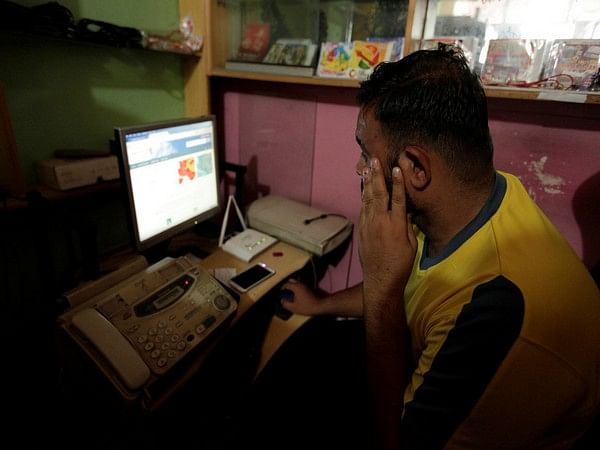New Delhi: Nearly four years after it was launched, the Prime Minister’s Wi-Fi Access Network Interface (PM-WANI) scheme to set up public Wi-Fi hotspots across the country to increase internet penetration has failed to garner much interest, falling behind targets.
According to data from the Telecom Regulatory Authority of India (TRAI), only 2,07,642 PM-Wani Wi-Fi hotspots had been deployed across the country as of 22 August. This falls well short of the target of 50 lakh public Wi-Fi hotspots by 2020 and 1 crore by December 2022 set by the National Digital Communications Policy (NDCP), 2018.
Additionally, for Digital India 2030 mobile and broadband policy objectives, the Bharat 6G Vision had set the goal of 1 crore public Wi-Fi hotspots by 2022 and 5 crore by 2030.
ThePrint takes a look at what is hampering the proliferation of public Wi-Fi hotspots under PM-WANI and what the government is doing about it.
Also Read: DGCA fines Air India Rs 90 lakh for operating flight with non-qualified crew
What is PM-WANI
The PM-WANI scheme was approved by the then Union Cabinet, headed by Prime Minister Narendra Modi, in December 2020. It proposed the set up of public Wi-Fi hotspots across the country through public data offices (PDOs)—which could even be a local kirana shop.
The policy was meant to help accelerate uptake of broadband internet services, thereby improving digital access.
The proliferation of public Wi-Fi hotspots was also expected to increase employment for small and micro-entrepreneurs, providing them with an additional source of income.
What is the need for PM-WANI
In its various consultations over the past few years, telecom regulator TRAI has noted that India lags behind other countries in terms of providing access to broadband internet, especially in rural areas, and that existing service providers may not have the reach or the incentive to deliver public Wi-Fi in remote areas.
Therefore, a need was felt to enable small providers to enter the public Wi-Fi ecosystem and have the capabilities and incentives to provide public Wi-Fi on a small scale.
In its 2020 recommendations, titled ‘Proliferation of Broadband through Public Wi-Fi Networks’, TRAI also noted that world over, Wi-Fi hotspots are used to fill gaps in cellular coverage.
According to TRAI, in most major economies, mobile users use Wi-Fi technology to communicate for 50-70 percent of their total usage time. However, in India, this figure is less than 10 percent.
“Therefore, there is a dire need to exploit the Wi-Fi technology also for delivering broadband services at affordable prices,” it said.
Why has PM-WANI failed to meet targets
PDOs—conceptually similar to cybercafes or public call offices (PCOs)—are responsible for establishing, maintaining, and operating the PM-WANI compliant Wi-Fi access points that deliver broadband services to subscribers. For this they procure the Internet bandwidth from telecom service providers (TSPs) or internet service providers (ISPs).
However, a key reason why the PM-WANI scheme has been relatively unsuccessful is the significantly high Internet leased line charges that TSPs and ISPs charge PDOs.
Taking cognisance of the matter, the Department of Telecom (DoT), in November 2022, had written to TRAI, citing the extremely high cost of backhaul internet connectivity for the limited, below-target, proliferation of PDOs. It also highlighted that many times TSPs/ISPs insisted that PDOs connect public Wi-Fi access points using the expensive internet leased line instead of regular FTTH (fibre-to-the-home) broadband connection.
In August 2023, the then minister of state (MoS) for communications Devusinh Chauhan, in a written reply to Lok Sabha had also noted that the the main challenge observed in proliferation of PM-WANI in various states was its financial viability for service providers, especially when mobile data rates were much cheaper.
In its August 2024 consultation paper titled ‘Tariff for PM-Wani scheme’, TRAI pointed out that the PDOs pay at least 40-80 times more for 100 Mbps of internet leased line compared to what consumers pay for 100 Mbps of fibre broadband connection.
“A comparison of 100 Mbps of Internet leased line tariff vis-à-vis 100 Mbps of FTTH broadband connection shows that the annual tariffs for Internet leased lines are 40 to 80 times higher than a retail connection,” the regulator noted.
TRAI added that PDOs, particularly small scale PDOs such as local shops, retailers, chaiwalas, kiranawalas, storekeepers etc., generally have low revenue potential and don’t need a internet leased line connection. Industry estimates show that PDOs can end up paying anywhere from Rs 4-8 lakh annually to operators.
“This elevated cost of broadband connectivity may act as an impediment for PDOs, subsequently impacting the proliferation of PM-WANI,” TRAI said.
What is the proposed solution
According to the telecom regulator, the average daily data usage per Wi-Fi hotspot was about 1 GB till last year. However, this has come down to just a few MBs, which is less than the monthly average data limit being provided to retail broadband customers.
Taking into account the low data utilisation, TRAI is of the opinion that the requirement of PDOs may be fulfilled by retail broadband connection and they may not need to get an internet leased line connection.
It therefore proposed that the tariff for the PDOs be kept the same as that for a retail broadband connection to help the proliferation of Wi-Fi hotspots under PM-WANI.
“The Authority proposes that for the purpose of providing PM-WANI scheme, PDOs may be charged tariff rate at par with the tariffs for retail broadband (FTTH) connections, for the capacities for which the said retail tariff is being offered to subscribers by the service providers. Based on the experience gained, the Authority may review the proposed arrangement for the PM-Wani scheme, after a period of two years,” it suggested in the August paper.
The regulator has invited comments from stakeholders on this proposal by 6 September, 2024.
(Edited by Sanya Mathur)
Also Read: ‘Overambitious’ car manufacturers pose risk to India’s auto market despite no dearth in demand

